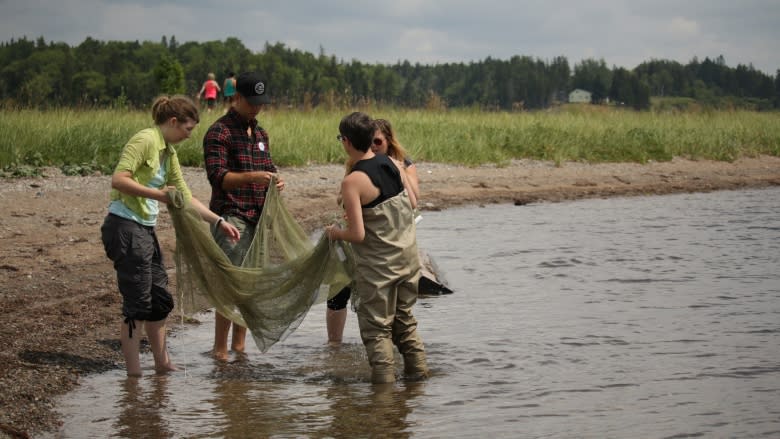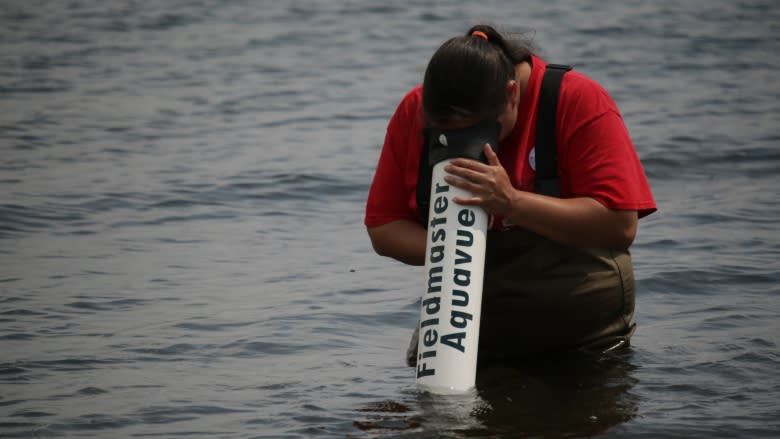All hands in the lake: Public field day examines life in Bras d'Or Lake
It's a field day with no homework involved.
For the third year in a row, citizen scientists are invited to come to the Bras d'Or Lake, Cape Breton's 4,000-square kilometre inland sea, and help track its ever-changing animal and plant life forms.
The Bras d'Or Lake is a UNESCO-designated biosphere reserve, one of only 18 in Canada.
The event will take place Saturday from 10 a.m. to 2 p.m. at Grand Narrows, St. Peters and Eskasoni.
Snapshot of lake life
"What we want to do is get interested residents, from around the Bras d'Or Lake and beyond, to come to these three sites that we've organized and learn about the animals that are present through hands-on field sampling," said Sarah Penney, co-ordinator of the Cape Breton Atlantic Coastal Action Program, one of the groups putting on the event.
Summer students with the program have been collecting data.
There will also be games for younger participants and escorted birdwatching and plant tours.
A big part of the event is helping to collect information about the biology of the lake, Penney said.
"We are looking to develop a snapshot of the biodiversity present from the three sites this year. Over time we are hoping that by collecting information each year, we'll be able to see changes … in the species that's present in the lake."
The results will be made public.
Watching for invasive species
Of particular interest is the presence of invasive species such as the detested European green crab, which pulls up eel grass and destroys marine habitats.
"We are looking out for common species like pipefish, sticklebacks and crabs and we are also looking for invasive species that we haven't seen yet, but that we expect might arrive soon ... like the Asian shore crab and the Chinese mitten crab," Penny said.
The ever-changing marine ecosystem is experiencing a fluctuation in jellyfish numbers.
Jellyfish population changes
"Something interesting from the last couple of years has been a difference in the number of jellyfish. Last year, we found fewer jellyfish than the year prior," Penney said.
"This year, we are expecting to see a resurgence in those numbers of jellyfish because of a phytoplankton bloom we had earlier this spring."
The data collected will go into a report to be released by the Bras d'Or Lake Biosphere Reserve Association, which is the other group that is helping put on the event.




